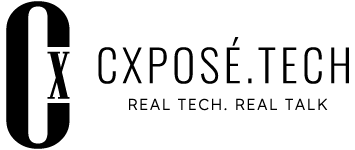Expert contributor, Hamsa Selvam outlines the four aspects of workforce wellbeing and how to get to the root causes of employee burnout and disengagement.
These days, the term “wellbeing” often gets tossed around, but its true impact sometimes becomes diluted amidst generic initiatives like year-long subscriptions to mindfulness apps or company-sponsored retreats. While these efforts are not without merit, they often miss the mark when it comes to addressing the root causes of employee burnout and disengagement.
According to Gallup, employee burnout results in $322B of turnover and lost productivity cost globally.
Employee engagement surveys and pulse checks often reveal alarming signs of burnout, stress, and dissatisfaction. However, translating these insights into effective interventions requires more than a quick fix. The key lies in understanding the specific areas where employees are struggling and addressing them through well-thought-out mechanisms, processes, and policies. This is where the people analytics comes into play.
In my experience, workforce wellbeing is a collective effort and not a HR team’s KPI; and the real game-changer is the ability to track the impact of the initiatives and return on these investments. By mapping wellbeing initiatives across four critical dimensions — Social, Physical, Mental, and Emotional — businesses can take a data-driven approach to improving employee experience and, in turn, organisational performance.
Social Wellbeing
What it is
Social Wellbeing refers to the formation and maintenance of employees’ social capital within the organisation. This dimension emphasises the importance of relationships, inclusion, and equity in the workplace while designing systems, processes, policies pertaining to the workforce.
Metrics to track social wellbeing of the workforce includes —
1. Skilling Opportunities: % of employees selected for leadership development programs, certifications etc. broken down by different demographics.
2. Growth Opportunities: Ratio of promoted employees, categorised by different demographics such as age, gender, caregiving status, ethnicity.
3. Responsible Exec Compensation: % Income difference between leadership and non-leadership roles.
4. Ethnicity Pay Gap: Differences in pay by ethnicity or race.
5. Gender Pay Gap: Differences in pay by gender.
Why measure this
These metrics allow companies to show, not tell their workforce and the world, how well they are fostering an inclusive environment where every employee has the opportunity to grow and succeed.
Physical Wellbeing
What it is
Physical Wellbeing focuses on creating jobs and benefits that support the physical health of employees. Key metrics include:
How to measure
1.Workplace Safety: Number of workplace accident or injury-related claims made by employees.
2. Sleep and Fatigue: Percentage of employees reporting sleep deprivation due to long working hours.
3. Accessibility: Number of workplace amenities accessible to employees with disabilities.
4. Commute Time: Percentage of employees spending more than two hours commuting to work.
Why measure this
By redesigning jobs for the workforce, measuring and reporting these metrics, companies can create a safer, healthier work environment that reduces stress and boosts productivity.
Mental Wellbeing
What it is
It is the influence of people, culture and leadership on the psychological safety of the workforce. Mental Wellbeing is about ensuring that the workplace culture supports employees’ psychological safety.
How to measure
1. Exit Interviews: Tracking reasons cited in exit interviews, such as stress or toxic management.
2. Pulse Checks: Percentage of employees reporting burnout through regular surveys.
3. Leave Utilisation: Rate at which employees are using their available leave days.
4. Benefits Utilisation: Utilisation rate of mental health resources provided by the company.
5. Support Availability: Number and accessibility of mental health support services offered to employees.
These metrics help understand team and individual resilience; and identify whether employees feel safe, supported, and able to thrive in their roles.
Emotional Wellbeing
What it is
Emotional Wellbeing revolves around how employees connect with their work and the sense of purpose it provides.
1. Job Satisfaction: Measure of how meaningful employees find their work.
2. Manager Relationships: Percentage of employees who rate their managers favourably.
3. Workplace Friendships: Percentage of employees who have at least one friend or a colleague they trust at work.
4. Work-Life Balance: Measure of employees’ satisfaction with their work-life balance.
5. Employee Voice: Measure of how often employees feel their opinions are valued.
6. Engagement in Company Initiatives: Percentage of employees participating in initiatives outside of their job scope.
Measuring these metrics provide insight into whether employees feel connected, valued, and fulfilled at work. When employees feel they are doing purposeful work and/or when they feel that they are doing work that makes a difference at their company, not only engagement but productivity increases.
Wellbeing initiatives are no longer optional — they are a necessity for companies aiming to thrive in today’s competitive landscape. However, the effectiveness of these initiatives depends on their alignment with the real needs of the workforce and the ability to measure their impact.
By adopting a comprehensive and data-driven approach, as demonstrated by Equitabl’s Impact Framework, companies can create a workplace where employees are not only satisfied but also empowered to perform at their best. The result is a win-win situation where employee wellbeing drives organisational success, creating a sustainable and prosperous future for all.
(This article first appeared at https://equitabl.io here)



 Hamsa is the Founder and CEO of Equitabl, a platform that democratizes people analytics for HR. She has a strong background in management consulting, having worked with Accenture, Deloitte, and PwC in the Asia Pacific region, specialising in HR, leadership, and workforce consulting. She is passionate about creating an equitable and inclusive work culture in organisations by unlocking the power of data analytics.
Hamsa is the Founder and CEO of Equitabl, a platform that democratizes people analytics for HR. She has a strong background in management consulting, having worked with Accenture, Deloitte, and PwC in the Asia Pacific region, specialising in HR, leadership, and workforce consulting. She is passionate about creating an equitable and inclusive work culture in organisations by unlocking the power of data analytics.






